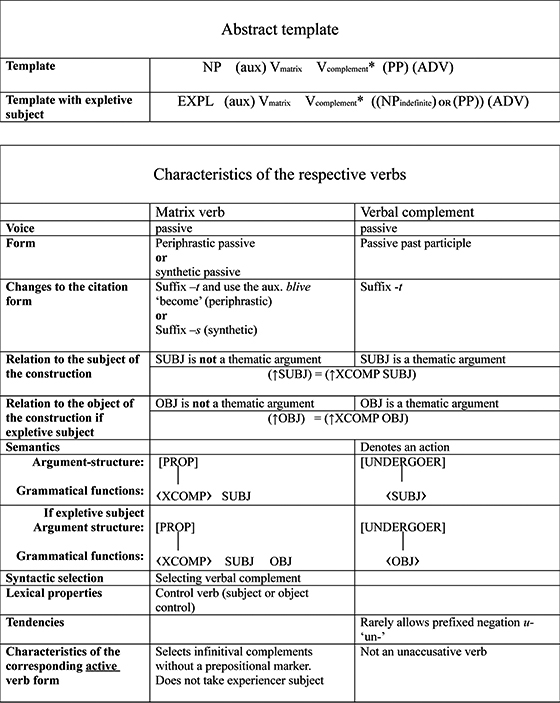Difference between revisions of "Grammar Squib - The Complex Passive in Danish"
(→Complex Passives in Danish) |
|||
| Line 1: | Line 1: | ||
== '''Complex Passives in Danish''' == | == '''Complex Passives in Danish''' == | ||
| + | |||
| + | [[File:Example.jpg]] | ||
| + | |||
| + | Bibliography: | ||
| + | |||
| − | |||
| Line 10: | Line 14: | ||
<phrase>15185</phrase> | <phrase>15185</phrase> | ||
<phrase>15191</phrase> | <phrase>15191</phrase> | ||
| − | |||
| − | |||
| − | |||
== '''Differences between complex passives in Norwegian and Danish''' == | == '''Differences between complex passives in Norwegian and Danish''' == | ||
Revision as of 15:07, 5 June 2010
Complex Passives in Danish
Bibliography:
Differences between complex passives in Norwegian and Danish
In Norwegian the active participles used in complex passives have the same argument structure as their corresponding nominal modifiers. Løpt as a two-place predicate occurs in complex passive constructions and as a pre-nominal modifier in Norwegian. The intransitive verb løpt does neither occur as pre-nominal modifier, nor in complex passives.
Participles in the Danish complex passives are always past participles, and they do not occur as pre-nominal modifiers. The Danish intransitive løbet can be used in a complex passive construction, but it never occurs as a pre-nominal modifier. Further, I doubt that a Danish two place predicate like løbet is allowed in complex passives, unless the DIR-argument is a predicate itself with its own argument structure.
Norwegian: løpt [AGENT,DIR] løpt [AGENT]
Danish: løbet [AGENT,DIR] løbet [AGENT]
In Norwegian, participles based on unaccusative verbs are allowed in complex passive constructions. This is not the case in Danish.
